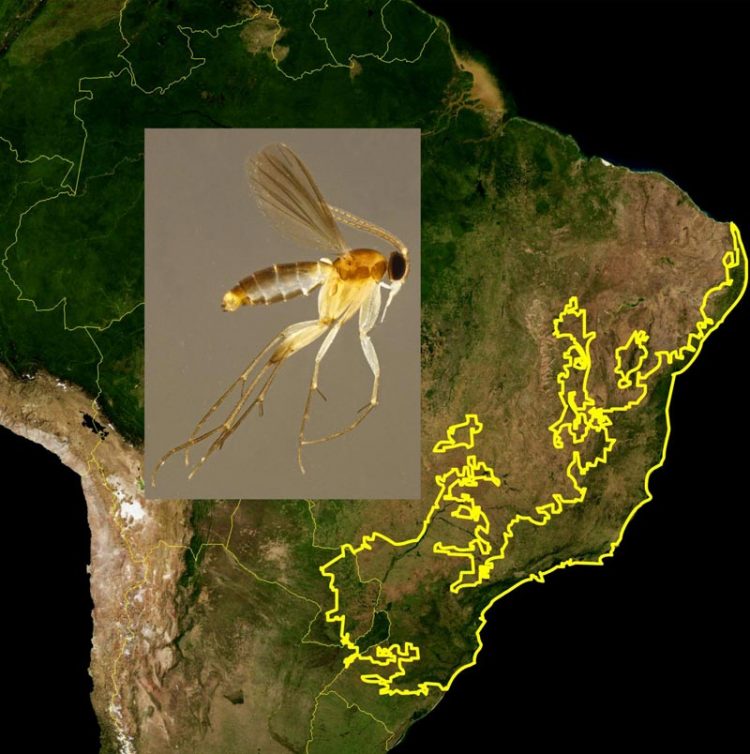Scientists discovered 20 new gnat species in Brazil

The Atlantic Forest ecoregion in Brazil where new species were found. Credit: Olavi Kurina/wwf.org
The Atlantic Forest ecoregion in Brazil is an area with diverse nature, following the coastline of the country and embracing tropical, subtropical and mangrove forests, also shrubland and grassland, described Olavi Kurina. “There are many endemic species known in this region.”
In addition to the known biodiversity, in September the researches described in these rainforests 20 gnat species in the genus Manota that were new to science.
The described species belong to the family of fungus gnats (Mycetophilidae) and are small flies, from 1.5 to 3mm long, with specific differences lying mainly in terminal morphology of the male specimens, specified Olavi Kurina.
The new species received scientific names by their morphological features and in honour of colleagues who had contributed to the research. As a result of zoogeographic analysis, a discrepancy was described between the comparatively wide distribution of the Manota species and the areas of endemism known for Diptera in South America and in Brazilian Atlantic Forest particularly.
###
The study, the first in-depth treatment of the genus Manota in Brazil, was carried out in cooperation with Estonian University of Life Sciences, University of Turku and University of São Paulo.
The type material of the new species is deposited in the insect collections of Estonian University of Life Sciences and University of São Paulo (international acronyms IZBE and MZUSP, respectively).
The scientific journal Zootaxa, a mega journal for zoological taxonomists in the world, published an article on this topic: http://www.
Media Contact
More Information:
http://dx.doi.org/10.11646/zootaxa.4472.1.1All latest news from the category: Life Sciences and Chemistry
Articles and reports from the Life Sciences and chemistry area deal with applied and basic research into modern biology, chemistry and human medicine.
Valuable information can be found on a range of life sciences fields including bacteriology, biochemistry, bionics, bioinformatics, biophysics, biotechnology, genetics, geobotany, human biology, marine biology, microbiology, molecular biology, cellular biology, zoology, bioinorganic chemistry, microchemistry and environmental chemistry.
Newest articles

A universal framework for spatial biology
SpatialData is a freely accessible tool to unify and integrate data from different omics technologies accounting for spatial information, which can provide holistic insights into health and disease. Biological processes…

How complex biological processes arise
A $20 million grant from the U.S. National Science Foundation (NSF) will support the establishment and operation of the National Synthesis Center for Emergence in the Molecular and Cellular Sciences (NCEMS) at…

Airborne single-photon lidar system achieves high-resolution 3D imaging
Compact, low-power system opens doors for photon-efficient drone and satellite-based environmental monitoring and mapping. Researchers have developed a compact and lightweight single-photon airborne lidar system that can acquire high-resolution 3D…





















